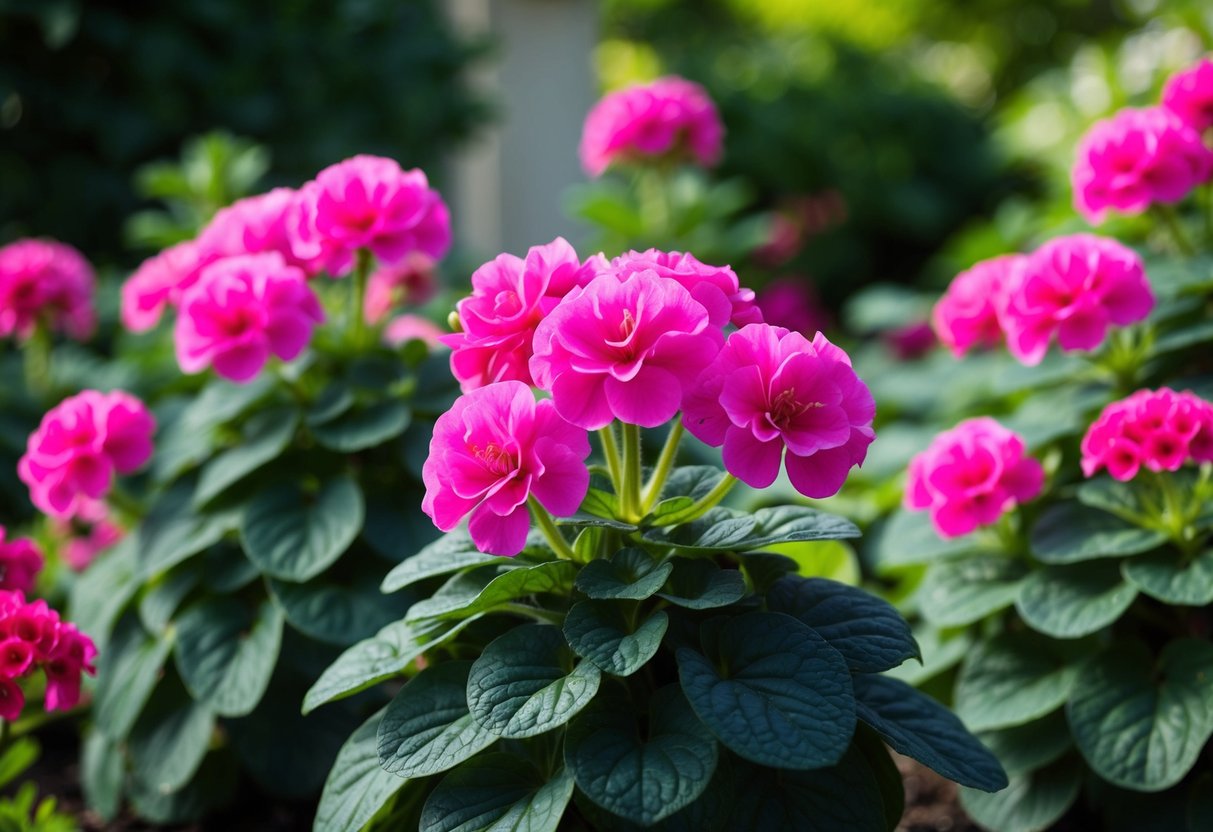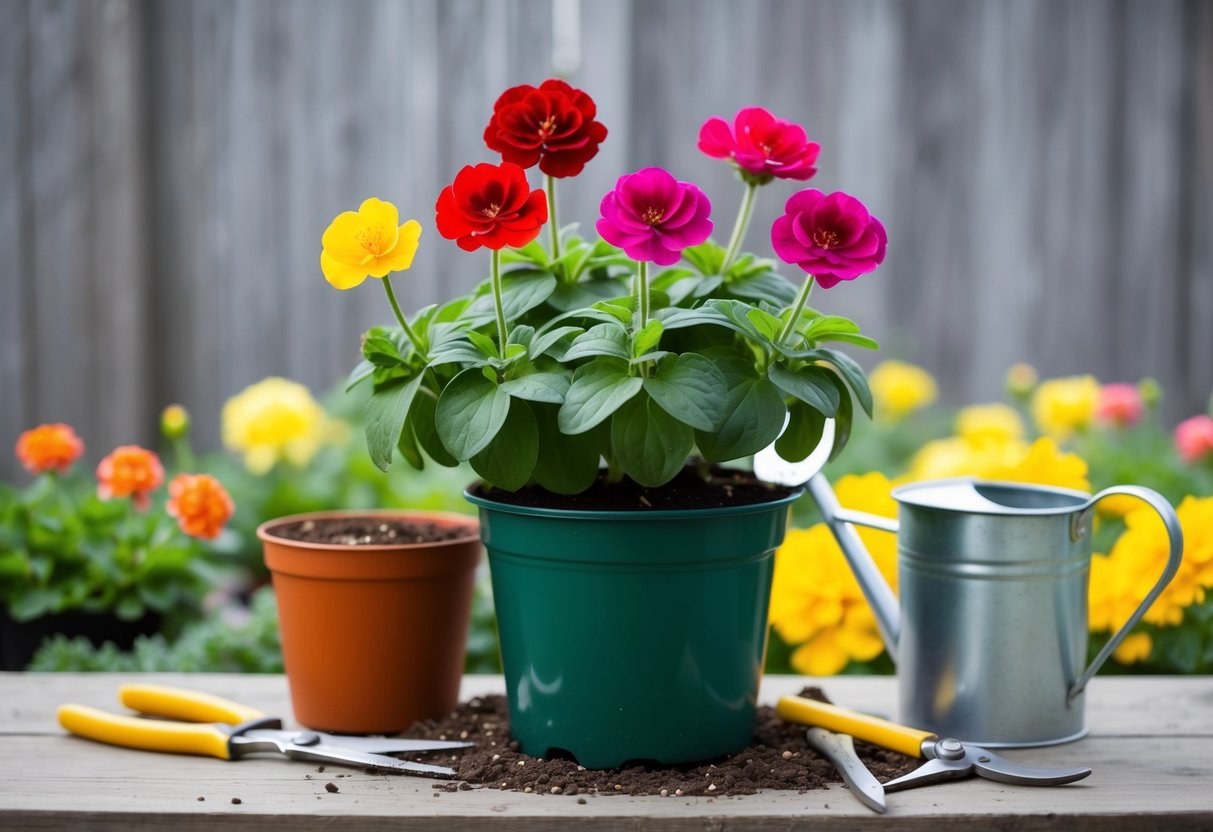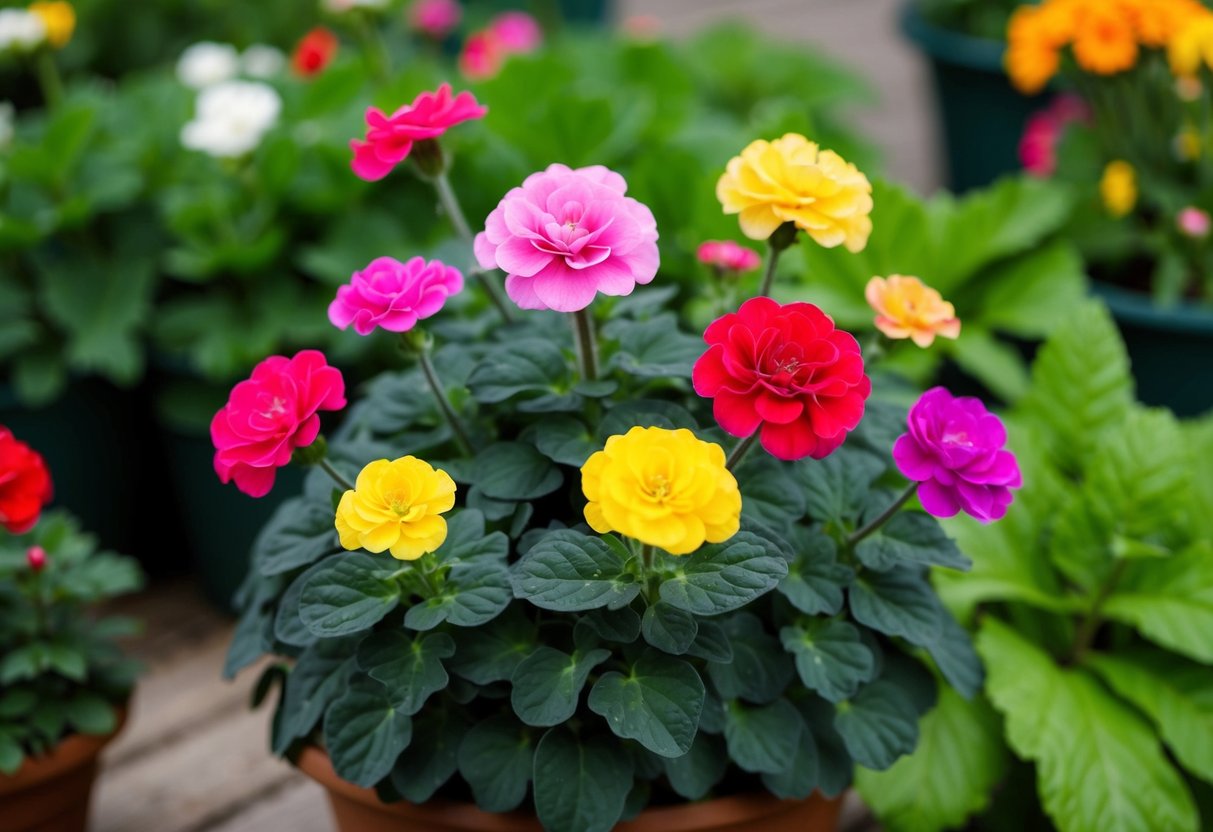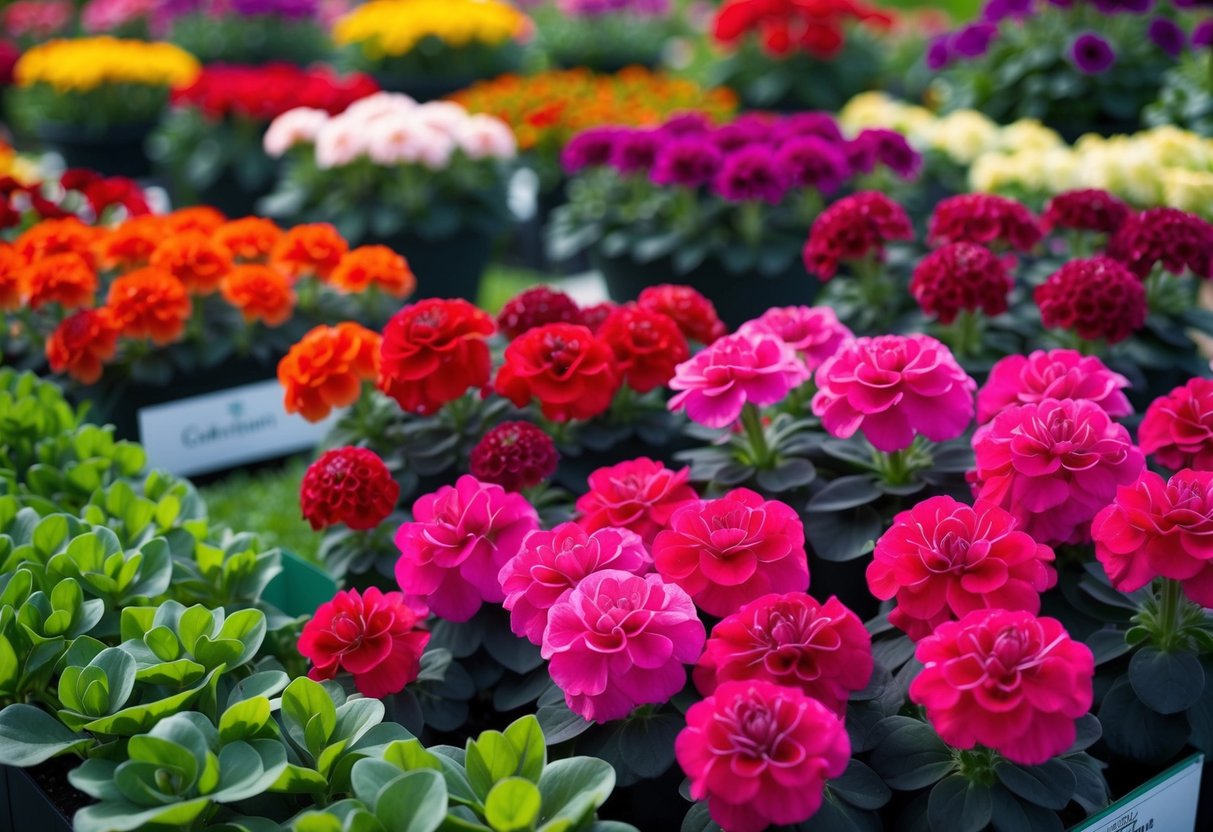Do Geraniums Bloom More Than Once a Year? Find Out!
Ever wonder if those vibrant geranium flowers can grace your garden more than once a year? The answer lies in understanding the nature of geraniums. These popular plants can be both annual and perennial, depending on your local climate.
In milder regions, geraniums often bloom multiple times a year, making them a delightful addition to your garden.

To keep your geraniums blooming repeatedly, certain care tips might come in handy. With careful attention, you can enjoy these beautiful flowers throughout various seasons.
Deadheading, or removing old flowers, is key to encouraging new blooms. This simple practice helps direct the plant’s energy toward creating new flowers.
For gardeners with harsher winters, saving your geraniums for the next growing season is possible, further extending their blooming potential. With the right conditions and care, you can experience the joy of these cheerful and hardy flowers again and again.

Understanding Geraniums

When it comes to geraniums, there are several types you might encounter. These varieties differ in how they grow throughout the year and how well they tolerate different climates.
Knowing what type of geranium you have will help you care for it properly and enjoy its beautiful blooms.
Types of Geraniums
Geraniums can be quite diverse. The two main types you’re likely to see are pelargoniums and hardy geraniums.
Pelargoniums, often called zonal geraniums or ivy geraniums, are popular for their bright blooms and are commonly used in gardens and pots.
Hardy geraniums, on the other hand, are sometimes referred to as cranesbill. They thrive in a wide range of climates and tend to last longer throughout the year.
By knowing whether your plant falls into the pelargonium or hardy geranium category, you can better tailor your care routines.
Annual vs. Perennial Geraniums
Geraniums can be annuals or perennials, and knowing which your plant is can influence how you care for it.
Annual geraniums bloom brightly but last only one season. You’ll find these more often in climates where the winters are too harsh for many plants.
Perennial geraniums, like the hardy varieties, can last for several years in the right conditions. In areas with milder winters, perennial geraniums return each year, giving you beautiful flowers without replanting.
Staying aware of your plant type can help you plan for its long-term care.
Geranium Hardiness Zones
Understanding the hardiness zones where your geraniums thrive is crucial for ensuring their health and longevity.
Pelargoniums prefer warmer temperatures and can be grown as perennials in warmer climates like USDA zones 10 and 11. These types might even bloom year-round if temperatures remain mild.
In contrast, hardy geraniums are more cold-tolerant. They can survive in USDA zones 5 through 8. These plants are great if you live in an area with cooler winters.
Knowing your local hardiness zone will help you choose the right type of geranium to grow successfully.
Geranium Care Essentials

Caring for geraniums involves giving them the right amount of sunlight, ensuring they have well-draining soil, and protecting them from pests and diseases. These elements help your geraniums thrive and bloom more than once a year.
Optimal Sunlight and Watering
Geraniums love sunlight. You should place them in a spot where they can get at least six hours of direct sunlight every day. This is especially vital if you want your geraniums to bloom multiple times a year, whether you have pelargonium peltatum or other types.
Watering should be consistent but not excessive. Check the soil regularly and water when the top 1-2 inches feel dry.
In hot weather, potted geraniums may require daily watering. To prevent root rot, ensure the soil is well-draining to keep excess water from accumulating.
Soil and Fertilization
Using high-quality soil is crucial for your geraniums. They thrive in soil rich in organic matter that drains well. If your garden soil is heavy, consider using a mix specifically designed for potting or add sand to improve drainage.
Fertilizing is another key aspect of geranium care. Apply a balanced liquid fertilizer with a ratio like 15-15-15, but use it at half strength. You can fertilize every 7 to 14 days.
This frequent light feeding gives consistent nutrients without overwhelming the plants, helping them bloom more often according to This Is My Garden’s guide on geranium fertilization.
Common Pests and Diseases
Geraniums can be affected by several pests and diseases, so it’s important to monitor them regularly.
Aphids, whiteflies, and spider mites are common pests that may attack your plants. You can manage them by using insecticidal soap or neem oil.
Diseases like root rot can occur if the soil is too wet. Make sure your plants have good drainage to avoid this issue.
Regularly checking your plants and adjusting care as needed ensures their health and longevity.
Maximizing Geranium Blooms

To keep your geraniums blooming beautifully, regular care practices like deadheading, pruning, and fertilizing are essential. These methods will help you extend the blooming season and maintain healthy plants, whether you are growing geraniums in containers or in the garden.
The Role of Deadheading
Deadheading is crucial for encouraging continuous blooms throughout the season. By removing spent blooms, you prevent the plant from putting energy into seed production. This allows it to focus on creating more flowers.
It’s best to deadhead regularly by cutting back the flower stem all the way to where it meets the plant. You should make it a part of your routine to inspect your geraniums often for any faded or dried flowers that need to be removed.
This practice not only enhances blooming but also keeps your plants looking tidy and vibrant.
Pruning and Plant Health
Pruning is another key practice that supports healthy, blooming geraniums. By pinching back stems, you promote a bushier plant with more blooms.
Mid-summer is an excellent time for this, even for mature plants. When you prune, aim to trim back any leggy or overgrown parts.
Pruned plants will channel their energy into growing new shoots and flowers. Regular pruning also helps improve air circulation. This is essential in preventing diseases, especially if you’re growing geraniums in containers where space might be tight.
Fertilizing for More Blooms
Fertilizing plays a vital role in maximizing the blooms on your geraniums.
Use a balanced liquid fertilizer every two weeks during the growing season to supply essential nutrients. As the season shifts toward fall, you might want to switch to a fertilizer higher in potassium to boost blooming over foliage growth.
If your geraniums aren’t performing well, consider adding fertilizer to give them a boost.
When growing geraniums in containers, there’s less natural nutrient availability, making regular fertilizing especially important. Always follow package instructions to avoid over-fertilizing, which can harm your plants.
Innovative Geranium Displays

Geraniums are not just beautiful in gardens, they also offer versatile options for creative displays. By thinking outside traditional planting methods, you can enhance both indoor and outdoor spaces.
Container Gardening with Geraniums
Container gardening is a fun way to showcase geraniums. You can use hanging baskets or window boxes to add color to your home.
Hanging baskets are great for porches as they let the geraniums cascade beautifully. Window boxes allow you to change the display easily and keep the plants close for frequent care.
Make sure to provide enough light, as geraniums thrive with about five to six hours of sun. Proper watering is crucial since containers dry out faster. Ensure your containers have drainage holes to prevent water from stagnating, which can harm the plant.
Using Geraniums in Garden Design
Incorporating geraniums into your garden design can transform your outdoor space. Place them among other flowers to add bursts of color.
You might consider using scented geraniums in areas where people gather. Their pleasant smell can enhance the garden experience.
Avoid overcrowding your plants. Good air circulation keeps them healthy and prevents diseases. Use gardening tips like mulching to maintain soil moisture and cool temperatures. Pairing geraniums with other plants that have different blooming times can also ensure continuous color throughout the season.
Seasonal Geranium Care

Caring for geraniums throughout the year involves preparing them for winter and reviving them in the spring. It’s important to understand the right techniques to keep your geraniums healthy and blooming.
Preparing for Winter
To get your geraniums ready for winter, start by overwintering them. This means you need to bring the plants indoors before the first frost.
Choose a cool spot with plenty of light.
Cut back any dead or dying stems to help your plants focus on storing energy. You can also put a layer of mulch around them to keep the soil temperature stable.
Mulching is especially important for outdoor geraniums.
If you live in a warmer climate, you might keep your geraniums outside. If so, consider them as annuals which may bloom for just one season. Keep watering them lightly and avoid fertilizers during winter to let them rest.
Spring Revival Techniques
In spring, it’s time to revive your geraniums. Start by pruning them thoroughly to encourage new growth. Trim away dead leaves and any long stems that don’t seem healthy.
Check the flower color and growth habits to ensure any issues are addressed. If your geraniums have been overwintered indoors, repot them with fresh soil to boost growth. Then, begin feeding them with a balanced fertilizer to help them flourish.
Let your plants adjust gradually to outdoor conditions by placing them outside for short periods each day. This hardens them off and prepares them for a season of being a low-maintenance but beautiful flower in your garden.







